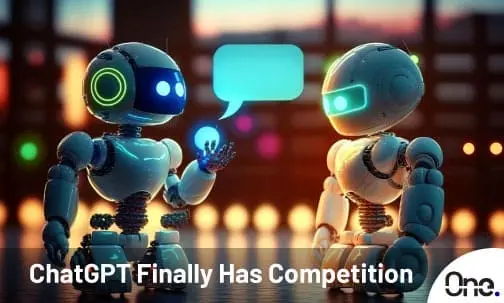By Ryan Morrison, Published January 29, 2024
In the ongoing battle for AI supremacy, a new contender has entered the ring. Google Bard with Gemini, powered by the Gemini Pro-scale model, has emerged as a strong competitor to ChatGPT. The recent performance boost of Bard places it at the second position on the Large Model Systems Organization (LMSYS) Chatbot Arena leaderboard, right behind OpenAI’s GPT-4 Turbo.
Bard’s Rise to Prominence
Since its release in December, Bard with Gemini has showcased a remarkable improvement in its performance, especially when pitted against ChatGPT in independent tests. The competition, organized by LMSYS, features both closed-source models like GPT-4 and Gemini Pro, as well as open-source AI such as Meta’s Llama 2.
In a recent head-to-head test between Bard and the free version of ChatGPT, Bard demonstrated its prowess, outperforming its well-established counterpart. This marks the first time Bard has managed to surpass the base version of GPT-4, which is the powerhouse behind premium versions of both ChatGPT and Microsoft Copilot.
Gemini Pro’s Role in Bard’s Success
Jeff Dean, Chief Scientist at Google DeepMind, attributes Bard’s recent success to a new version of Gemini Pro called “scale.” This update has evidently propelled Bard to new heights, and the model is now gaining recognition as a serious competitor in the AI landscape.
The Chatbot Arena Showdown
The LMSYS Chatbot Arena serves as the battleground for these AI titans. With over 200,000 votes cast, the leaderboard reveals GPT-4 Turbo at the top, followed closely by Bard with Gemini Pro. This competitive landscape also showcases various proprietary models, with only Mistral’s Mixtra-8x7b breaking into the top ranks as an open-source large language model.
| Rank | Model | Organization | License |
|---|---|---|---|
| 1 | GPT-4 Turbo | OpenAI | Proprietary |
| 2 | Bard (Gemini Pro) | Proprietary | |
| 3 | GPT-4-0314 | OpenAI | Proprietary |
| 4 | GPT-4-0613 | OpenAI | Proprietary |
| 5 | Mistral Medium | Mistral | Proprietary |
| 6 | Claude-1 | Anthropic | Proprietary |
| 7 | Claude-2.0 | Anthropic | Proprietary |
| 8 | Mixtral-8x7b | Mistral | Apache 2.0 |
| 9 | Gemini Pro (Dev API) | Proprietary | |
| 10 | Claude 2.1 | Anthropic | Proprietary |
What Sets Bard Apart?
Bard’s key strengths lie in its ability to maintain context, comprehend emotions, and deliver contextually relevant responses. The Gemini Pro-scale model, with its unique features, has propelled Bard to the forefront of conversational AI. Notably, Bard’s customization options, allowing adaptation to specific industries or domains, make it a versatile tool for diverse applications.
Looking Ahead: Gemini Ultra Release
Jeff Dean hinted at the upcoming release of Gemini Ultra, Google’s most advanced and natively multimodal model. Expected later this year, Gemini Ultra is set to power a new premium version of Bard called Bard Advanced. The anticipation is high, with speculations that this release will likely outperform even the current leader, GPT-4 Turbo.
In his statement on X, Jeff Dean expressed excitement about the intensifying competition, signaling that the AI race is reaching unprecedented levels. As Google continues to push the boundaries with Bard and the impending Gemini Ultra release, the AI landscape is poised for exciting developments. The stage is set for a future where conversational AI models redefine the possibilities of human-machine interaction.
1. What is Google Bard with Gemini?
Google Bard with Gemini is a conversational AI model powered by the Gemini Pro-scale model, developed by Google. It competes with other AI models like ChatGPT and GPT-4 Turbo in the field of natural language processing.
2. How does Bard with Gemini differ from other AI models?
Bard with Gemini distinguishes itself through its remarkable performance in maintaining context, comprehending emotions, and delivering contextually relevant responses. Its unique features, powered by the Gemini Pro-scale model, propel it to the forefront of conversational AI.
3. What role does Gemini Pro play in Bard’s success?
Gemini Pro, particularly its latest version called “scale,” plays a crucial role in Bard’s recent success. Jeff Dean, Chief Scientist at Google DeepMind, attributes Bard’s performance boost to this update, which has propelled Bard to new heights in the AI landscape.
4. How does Bard perform in comparison to other AI models?
Bard has demonstrated impressive performance, particularly in head-to-head tests against competitors like ChatGPT. In recent independent tests organized by LMSYS, Bard surpassed the base version of GPT-4 for the first time, marking its emergence as a serious competitor in the AI arena.
5. What is the significance of the Chatbot Arena Showdown?
The LMSYS Chatbot Arena serves as a competitive platform for AI models like Bard, GPT-4 Turbo, and others. With over 200,000 votes cast, the leaderboard reveals the competitive landscape, highlighting Bard’s position as a strong contender alongside established models.
6. What sets Bard apart from other conversational AI models?
Bard’s key strengths lie in its ability to maintain context, comprehend emotions, and deliver contextually relevant responses. Additionally, its customization options allow adaptation to specific industries or domains, making it a versatile tool for diverse applications.
7. What can we expect from the upcoming Gemini Ultra release?
Google’s upcoming release of Gemini Ultra, expected later this year, is anticipated to further advance the capabilities of Bard. Gemini Ultra, Google’s most advanced and natively multimodal model, is set to power a new premium version of Bard called Bard Advanced, raising the bar for conversational AI models.
8. How does Bard contribute to the future of human-machine interaction?
As Google continues to push the boundaries with Bard and the impending Gemini Ultra release, the AI landscape is poised for exciting developments. Bard’s advancements pave the way for a future where conversational AI models redefine the possibilities of human-machine interaction.

